Thrifty housewives often wonder what is better for bed linen - satin or cotton, or what is better. The article will help you make the right choice to create the best conditions for rest and sleep.
- Choosing the best material for a comfortable sleep
- Satin fabric: characteristics and advantages
- Calico and its characteristics
- Poplin: fabric characteristics
- Flannel - features and properties
- Percale - characteristic properties of the fabric
- Polyester - advantages and disadvantages
- Polysatin is a new product on the fabric market
- Cotton - the advantages of natural fiber
- Chintz: overview characteristics
- Differences between fabrics
- So what is the best choice for bed linen?
- How to wash calico, satin, poplin
Choosing the best material for a comfortable sleep
The right choice of bed linen material, based on quality characteristics, plays an important role in ensuring comfortable sleep. Currently, the textile industry offers a wide range of fabrics made from natural and synthetic fibers.
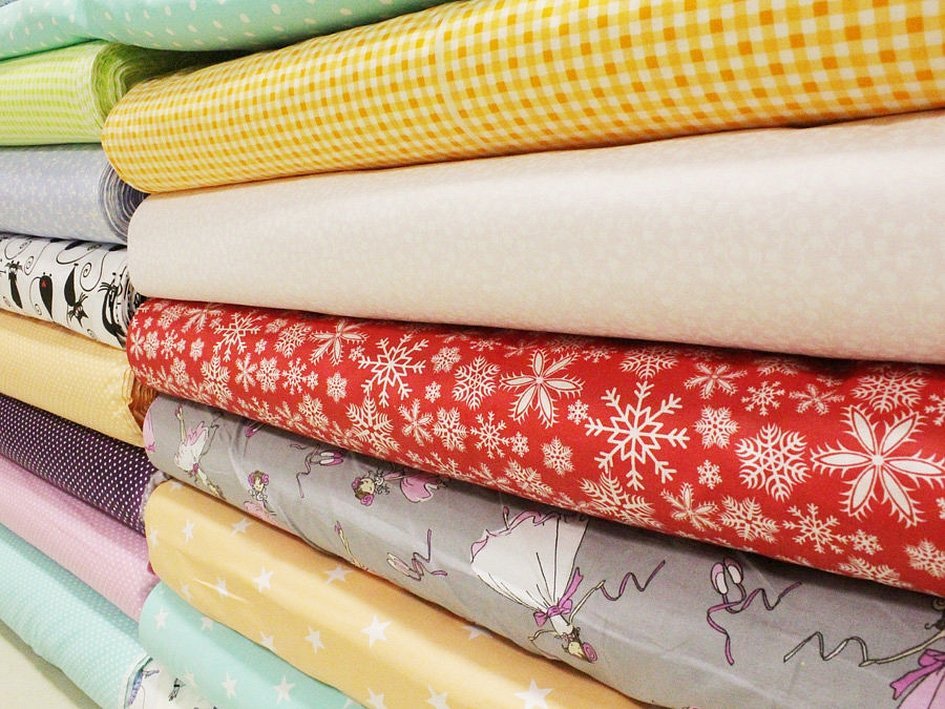
Manufacturers of bed linen have a huge selection of fabrics for sewing bedding with various quality characteristics. The choice of the best material for a comfortable sleep is left to the consumer.
Satin fabric: characteristics and advantages
Satin is made from cotton or silk threads using a satin weave, which is distinguished by its special density. Satin woven from natural cotton fibers in two threads is usually used for sewing bed linen. Smooth, silky to the touch, the front side has a characteristic shine. This effect is achieved by the peculiarities of the thread weave, when the weft threads predominate on the surface.
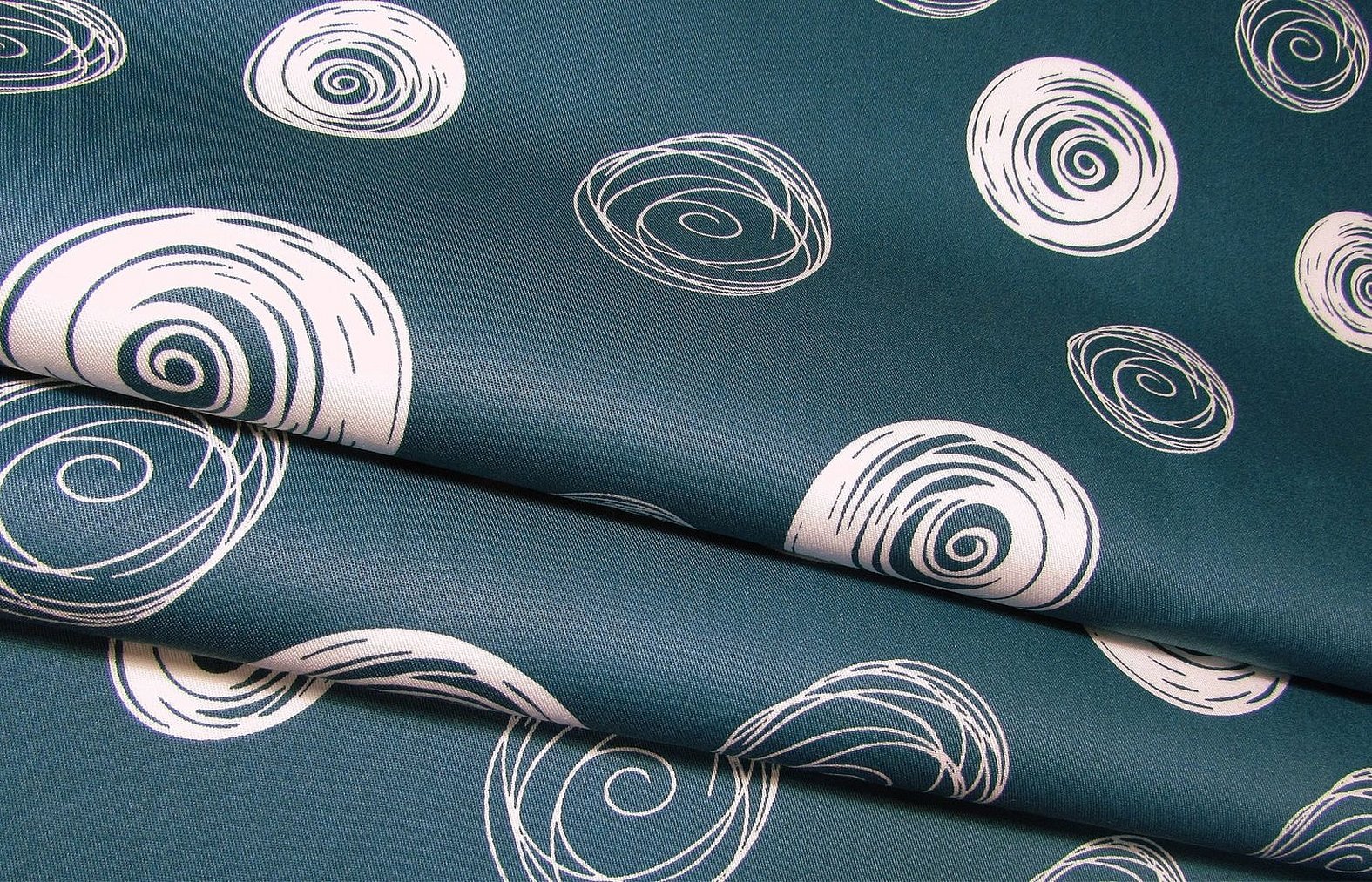
Soft and durable fabric is popular with manufacturers and buyers of bed linen. Cotton satin is cheaper than silk, but more expensive than other cotton fabrics. However, the fabric absorbs and evaporates moisture well, does not interfere with air exchange. At the same time, satin is wear-resistant, withstands multiple washings, without damage to the appearance and quality characteristics.
Calico and its characteristics
Calico is a cotton fabric with a plain weave. It is inferior to satin in density. The fabric has a slightly rough texture and is recognizable by visible thickenings on the threads. One of the main types of fabric used for sewing underwear. Printed and plain-dyed printed calico has a variety of designs and colors. Calico can withstand a large number of repeated washings, although it is inferior to satin in this indicator.
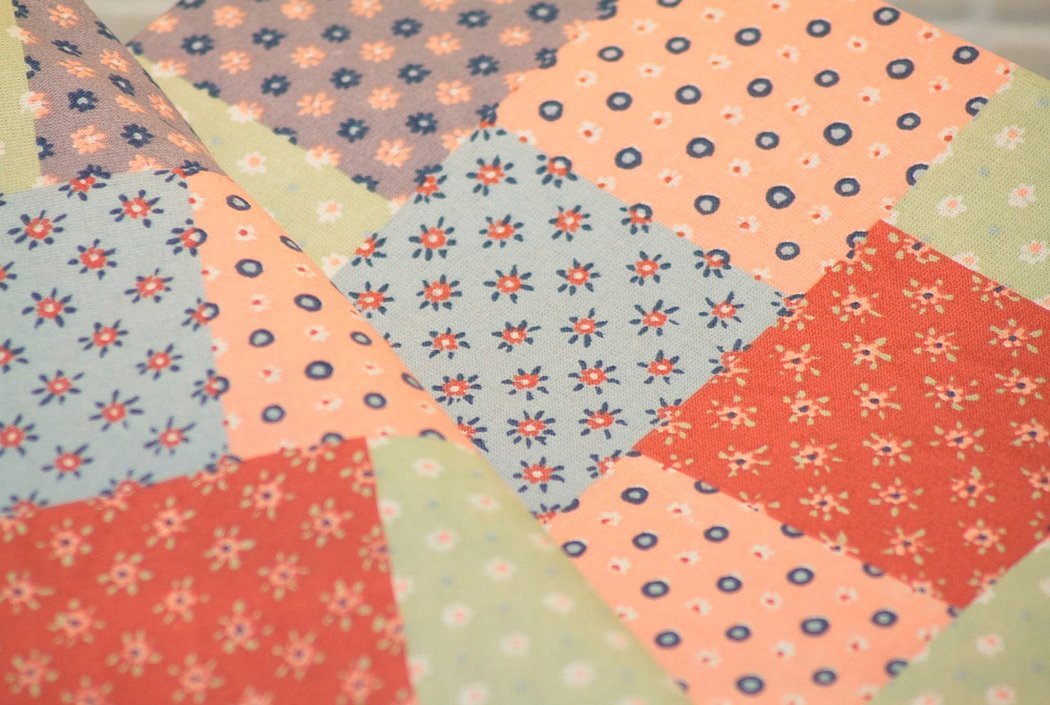
The answer to the question - calico or satin, which is better for bed linen - is obvious. Satin has higher quality characteristics, but is more expensive. Calico is inexpensive and, like satin, is made from natural cotton fiber.
Poplin: fabric characteristics
Poplin also refers to fabrics with a plain weave of threads. It has been produced for more than five centuries. Initially, it was made of silk, cotton began to be used later. Therefore, when deciding poplin or cotton, which is better, we choose among materials made from the same fiber of plant origin. At present, poplin is woven not only from natural threads, but also using synthetics and artificial fibers. The thickness of the threads and the type of weaving, which assumes a special ratio of the weft and warp, remain unchanged.
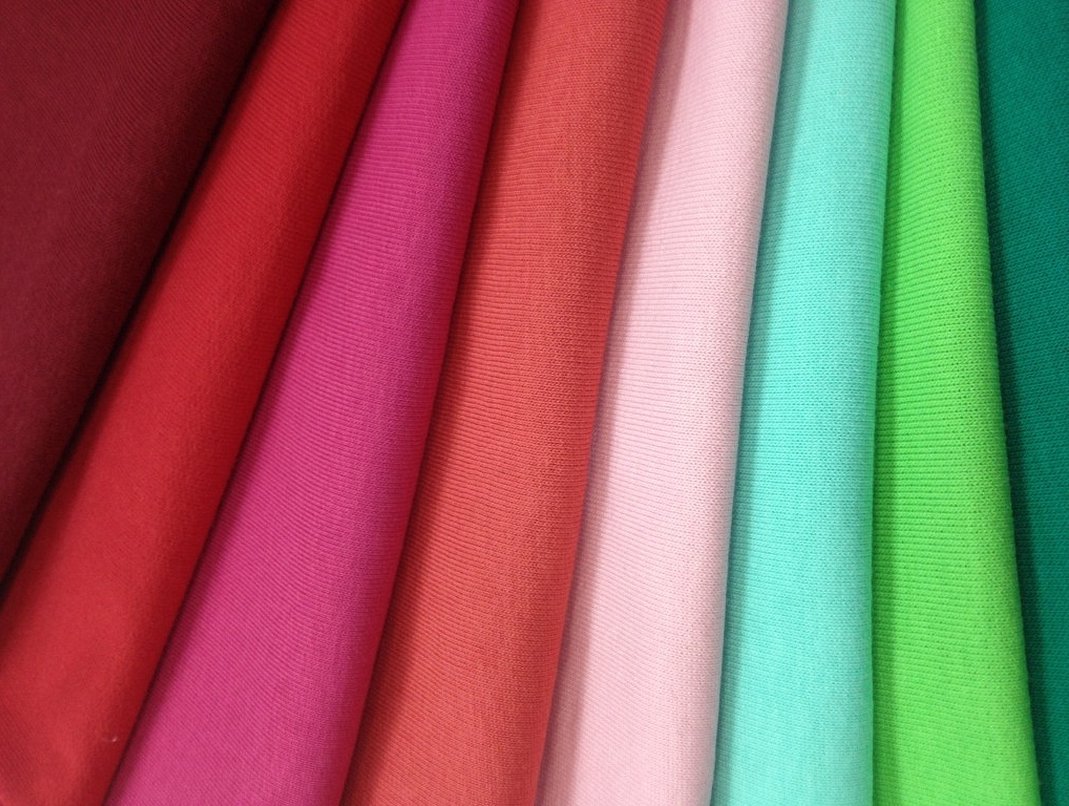
Poplin is a dense material, but it has a smooth texture and is soft to the touch. Bed linen made of poplin is resistant to frequent washings and can withstand hundreds of years. The fabric is wrinkle-resistant and retains its original appearance for a long time.
Flannel - features and properties
Flannel is a cotton, semi-woolen or woolen fabric with a plain or twill weave. It is distinguished by the presence of one-sided or two-sided pile.
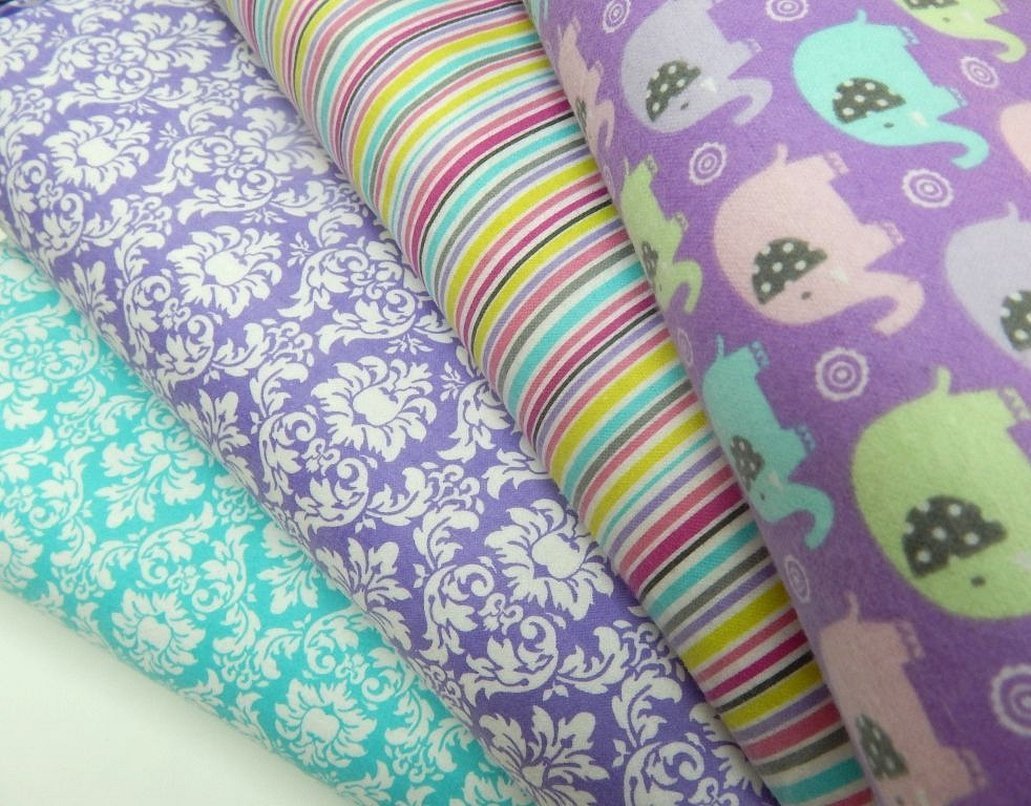
The increased density of the fabric does not impede air exchange and is a vapor-permeable material. Flannel can be plain-dyed, printed or bleached.
Please note! Soft, wear-resistant material that perfectly absorbs moisture, is ideal for making baby diapers, in which even a newborn baby can be swaddled.
Percale - characteristic properties of the fabric
Percale is characterized by increased density, will not let through any feather or fluff, and therefore it is recommended to use it in the manufacture of bedding, in which down and feather are used as a filler. Naturally, the fabric does not provoke allergic reactions. It turns out to be a hygienically clean, beautiful bed. The composition of percale fabric is almost one hundred percent cotton, and the reviews speak eloquently about this.
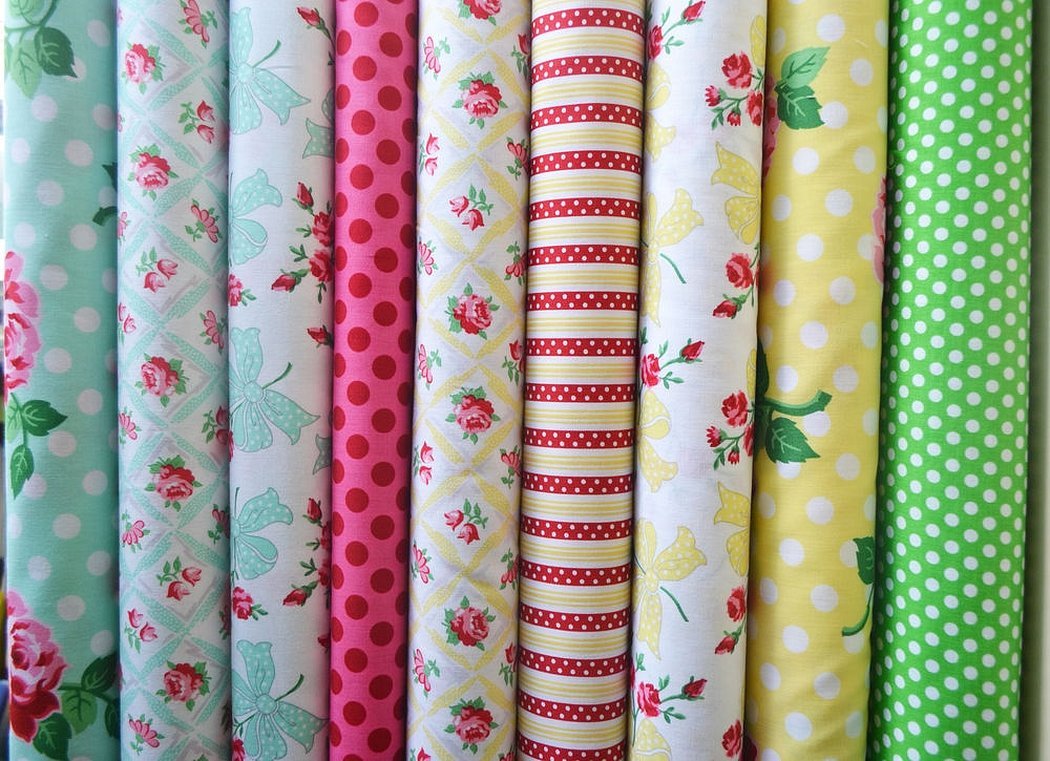
Percale bedding, unlike those made from calico, is characterized by a greater margin of safety. The surface of the fabric is smooth, as it is treated with a special solution to improve its consumer properties. Percale linen is soft and silky, which makes it especially pleasant to use.
Polyester - advantages and disadvantages
Polyester is a general name for polyester fibers and materials made from them. Polyester has very high tear and abrasion resistance, which provides it with great strength and wear resistance. Polyester fibers are used to make fabrics that provide good thermal insulation and do not prevent moisture evaporation. Even greater strength and antistatic effect is provided by adding other fibers to polyester.
Pure polyester is a fabric with a smooth texture reminiscent of silk. One hundred percent polyester is rarely used for sewing products. Cotton is usually added to it, as well as wool with viscose.
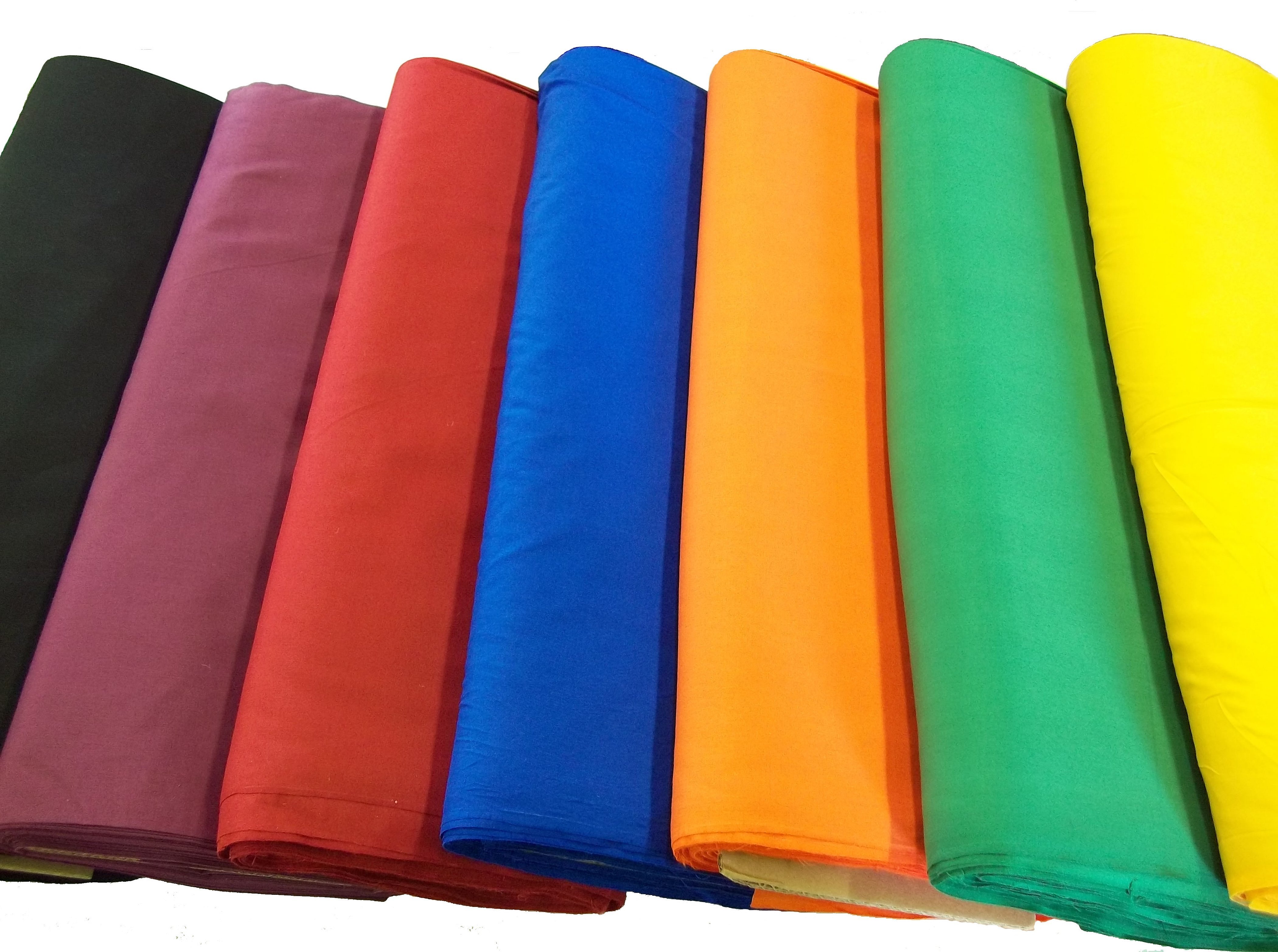
Additional information! Polyester is a universal material, widely used due to its positive properties. Despite the large number of advantages, polyester remains a synthetic material. And the user is offered to decide for himself whether to buy natural textiles or more affordable polyester.
Polysatin is a new product on the fabric market
Polysatin is an artificial silk that has the same external characteristics as its natural counterpart, satin: the same noble shine, smoothness and softness.

The composition of this material is not constant, the percentage of synthetic and cotton fibers varies. Usually, cotton fibers are added in the amount of 30-50%. Sometimes polysatin consists entirely of polyester.
Cotton - the advantages of natural fiber
Cotton is a particularly popular material for bed linen. It is quite durable and inexpensive. Hygroscopic cotton linen provides comfortable sleeping conditions at any time of year, keeping you warm in winter and cool in summer. But cotton can be different. Therefore, you should pay attention to the cost of linen. High-quality cotton is a little more expensive, but will last longer, while cheap cotton will shrink after the first wash and lose the brightness of its colors.

The question of what is better, calico or cotton, is to some extent controversial, since calico is a cotton fabric and, therefore, has the same properties.
Chintz: overview characteristics
Chintz is a light cotton plain-dyed or printed fabric with a plain weave. It is produced from raw calico by various dyeing and finishing operations. Chintz is used to sew not only bed linen, but also clothing.
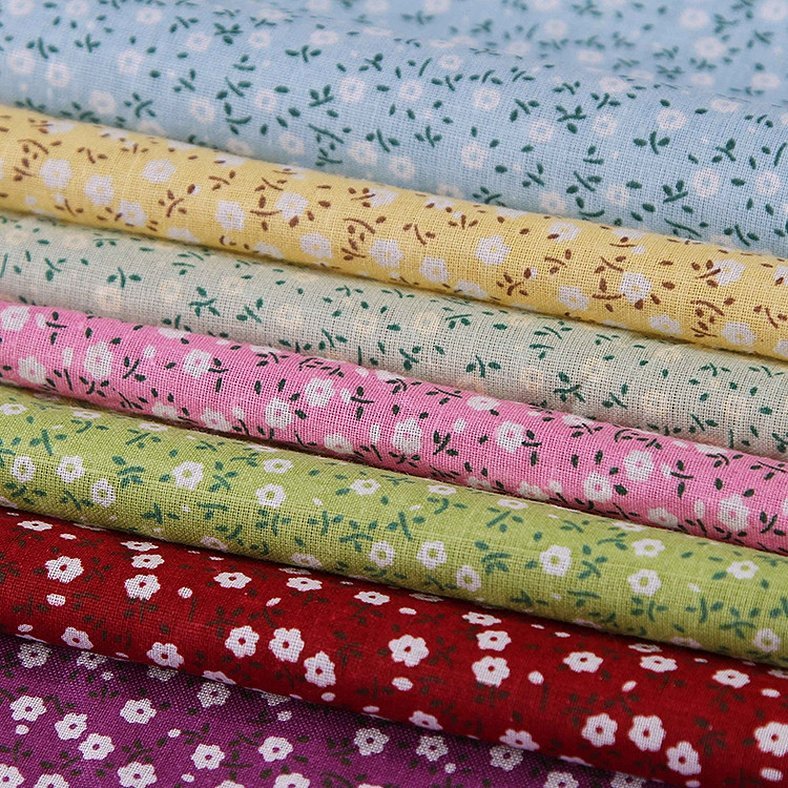
For greater attractiveness, chintz is often painted with various shades of paint, all sorts of patterns and designs. Currently, the fabric is mostly used for sewing bed linen. This is an ideal option for direct contact with human skin. Although, if you think about what is better chintz or satin, the choice will clearly not be in favor of chintz, although cheap and outwardly attractive, but short-lived material.
Differences between fabrics
It is necessary to compare fabrics by several parameters. Among which are texture, performance characteristics, wear resistance, care features, price. The most common fabrics for bed linen are made from natural cotton fiber, pure or with an admixture of synthetic fiber in order to improve the user qualities of the material.
Additional information! The most dense and wear-resistant fabrics are satin and percale, which is reflected in the cost of bed linen made from these materials. These materials are also the most durable and can withstand numerous washings.
Calico, and especially chintz, are inferior in terms of strength and wear resistance, but win in terms of price. Therefore, the choice should be made based on the characteristics of a certain type of natural, mixed and synthetic fabrics.
So what is the best choice for bed linen?
Bedding is usually made of woven materials, mainly cotton. Such fabrics do not slip, are hygroscopic, and are pleasant for the body. They are easy to care for, easy to wash, dry, and iron. The disadvantages may include some degree of shrinkage during washing and the fact that cotton linen wrinkles when used. However, the affordability of cotton products outweighs minor disadvantages.
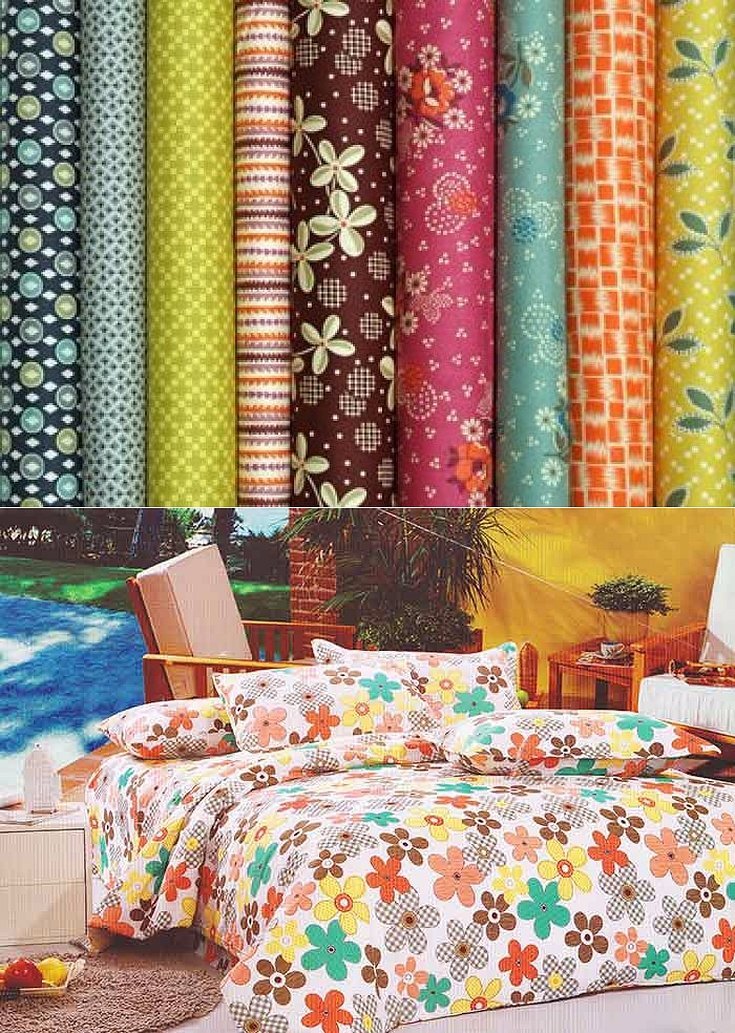
Cotton fiber fabrics are distinguished by their diversity, achieved by different weaves of threads. Rare weaves achieve lightness and translucency, characteristic of cambric. This fabric is used to sew elegant sets for newlyweds, but you can’t count on the durability of such underwear.
Chintz is cheap, but short-lived and quickly loses its original appeal. However, it can be used constantly, and frequent replacement does not entail large expenses. Calico and satin are more durable and wear-resistant. Calico is relatively inexpensive and can withstand hundreds of washes, although this indicator is lower than that of satin, but it is the best option for everyday use. This is especially true for such an improved variety of calico as ranfors. Beautiful and practical bed linen at affordable prices.
Bed linen made of printed satin provides deep and comfortable sleep, excellent tactile sensations, wear resistance, durability and, of course, an attractive appearance. Another advantage of satin is that this fabric practically does not wrinkle. Therefore, the satin bed linen set will retain its original shape and color.
Satin is a very pleasant fabric for the body and practical to use. Light, dense and durable, it can withstand hundreds of washes, and does not fade and is easy to iron. Satin underwear is quite an expensive pleasure for everyday use. Only percale, which is distinguished by its increased strength, is more expensive than satin in the group of cotton fabrics. This is a material for sewing luxury sleepwear. Therefore, to the question of satin or cotton, which is better, the answer is one - satin woven from high-quality cotton threads is, of course, preferable.
Additional information! It is also worth noting the mixed material - polysatin, which includes cotton and polyester in various proportions. It is also used for sewing bed linen. Polysatin is highly wear-resistant, does not fade, and is pleasant to the touch.
How to wash calico, satin, poplin
Satin and poplin do not require particularly hot water for washing, they are perfectly washed at a low temperature. In this case, the washed linen can do without ironing. Calico should be washed at a higher temperature and after the linen dries, it must be brought to condition with an iron to ensure the necessary softness.
If we compare satin, calico or poplin in this aspect, preference should be given to satin and poplin. Although they are more expensive than calico, they will last longer, without requiring additional care efforts, except for washing.
It is necessary to choose fabric for bed linen based on the sum of its quality characteristics in comparison with other materials used for the same purposes. The information provided above can be of great help in this difficult task.




